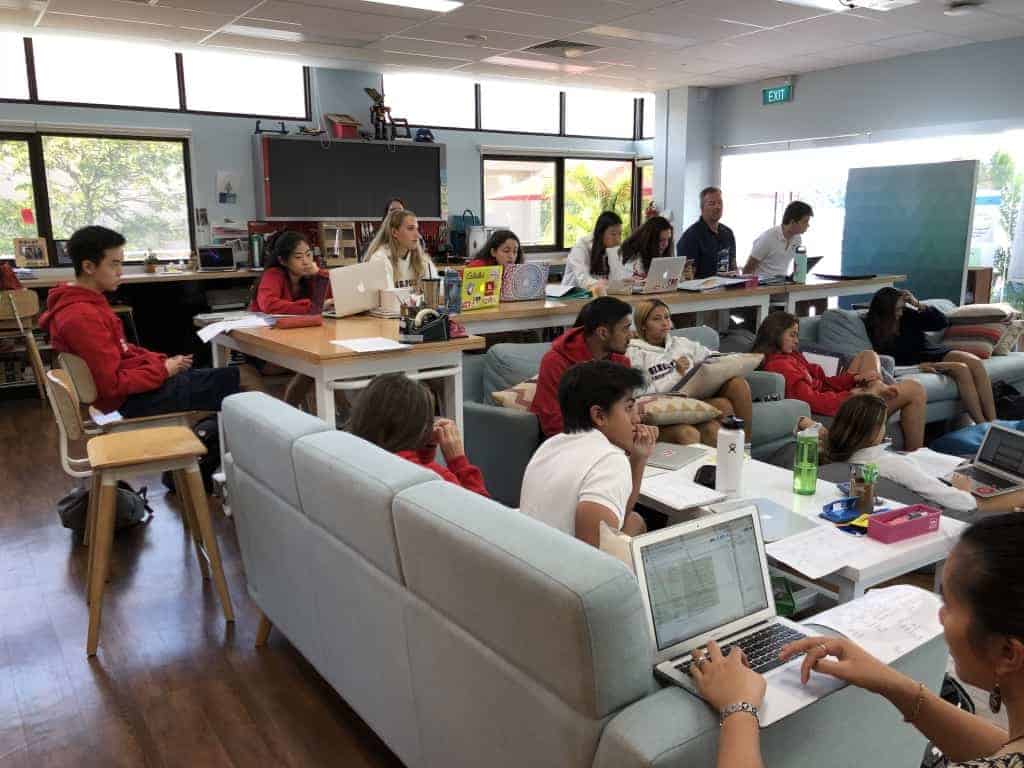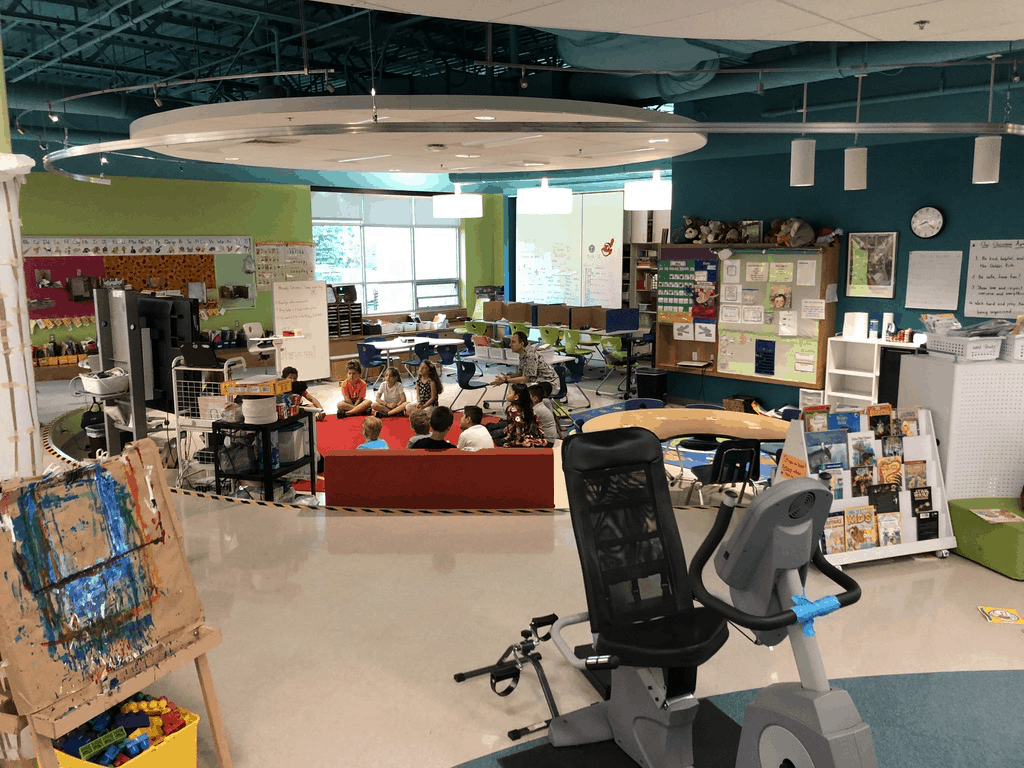Alive With Possibility: 20 Tips for Creating Responsive Schools

This blog is based on a keynote Tom recently did for the Global Education Conference Network. To watch that keynote, click here.
We’re a couple years into a new era, one where smart machines are rewiring the way we work, learn and play. Today’s high school students will see artificial intelligence help solve some of our most vexing problems—and pose significant risks.
The planet is heating up—we just experienced the hottest October on record—and the weather is becoming more chaotic. The climate crisis, arguably the biggest challenge of our time, is reshaping lives and economies.
The good news is that we know what to do and the tools for making a difference get better every month. Money flows to good ideas–in record amounts. About $250 billion in venture funding supported global startups this year and twice that was invested in U.S. nonprofits.
Given this paradoxical level of challenge and opportunity, what are responsive schools doing to support learners in this remarkable and disconcerting time? While visiting more than 100 schools this year, we spotted 20 tips.
1. Responsive schools build intentional, inclusive cultures. “Culture, culture, culture,” shared Randy Hollenkamp of Bulldog Tech in San Jose about the most important element of a responsive school. Culture is the cumulative effect of stated and shared values, policies and structures, incentives and supports, and formal and informal communication. It’s the product of adults being intentional about a set of shared behaviors.
2. Responsive schools know and care for their students. At Bronx Arena High School, each student is paired with an advocate counselor, who provides guidance and support for individual goal setting in the personalized, self-paced environment.
3. Responsive schools have a shared vision. Every good school is based on a set of foundational ideas that form a common intellectual mission (as High Tech High founder Larry Rosenstock would say). This creates a common sense of purpose and focus. The mission should be both succinct and profoundly deep (you can summarize in five seconds or unpack it for 5 hours).
4. Responsive schools are intentional about outcomes. After community conversations, responsive schools update their learning goals. These broader aims are often summarized as a portrait of a graduate.
Responsive schools link experiences to desired outcomes. Daniel Kerr, American School of Paris, explained: design challenges plus projects plus maker plus service learning prepares young people to be citizens of the world.
5. Responsive schools are guided by the learning sciences. Digital Promise summarized a growing body of research around 10 insights that underscore the importance of high expectations, effort and learning from mistakes, spacing and retrieval, leveraging interest and building autonomy, safety and well-being, practicing collaboration, and conducive environments.
6. Responsive schools empower students to meaningful work. Juan Cabrera kickstarted active learning in El Paso schools with 10 academies that are part of the New Tech Network where students engage in team-taught integrated projects.
Ron Berger, founder of EL Education, sees students do meaningful that will make an impact in the world where there are professional models of scientists, artists, politicians, professors that provide expert critique and guidance in places where there is a culture of respect and belonging, and where there is a real genuine audience.
7. Responsive schools engage learners in place. Schools in the Place Network connect rural learners to their community through design thinking and inquiry-based learning.
8. Responsive schools enable youth contribution. One Stone is a student-centered high school and afterschool program that helps students graduate with a sense of purpose and a track record of making a difference in the community.
9. Responsive schools build structures that support deep work. Every classroom at Science Leadership Academy exhibits five core values of inquiry, research, collaboration, presentation, and reflection. The remarkable consistency of powerful learning across the school is evidence of deep teacher collaboration supported by thought schedules, systems, professional learning opportunities.
10. Responsive schools value quality public work. Like successful sports coaches, Esther Wojcicki and six colleagues have created a flywheel of high expectations in the Palo Alto High School Journalism program. Students run 10 professional grade digital and print publications.
It’s a fast-paced and high-stress environment–students do world-class work on a deadline. “Students make a lot of mistakes,” said Wojcicki, “they may have to revise something 10 times, they learn that it is OK to fail, they develop the grit to continue.”
11. Responsive schools promote students based on demonstrated mastery. Boston Day and Evening Academy is a student-centered, competency-based school where students progress based on demonstrated mastery rather than seat time (see feature).
Lindsay Unified School District, in California’s Central Valley, is a leader in competency-based (they call it performance-based) education—“Students work at their performance level and advance through the curriculum when they have demonstrated proficiency of the required knowledge or skills.” (See feature and podcast with superintendent Tom Rooney.)
12. Responsive schools provide career structure and guidance. Cajon Valley USD, east of San Diego, introduces 54 World of Work units to K-8 students.
RISE High, a program of DaVinci Schools in Los Angeles, works with a network of youth-development agencies, municipalities and support centers to provide counseling, case management, tutoring, job readiness training, career pathways, internships, extracurricular opportunities, leadership development, and more.
13. Responsive schools connect youth to opportunity. Business partners of Tri-Rivers Career Center in Marion Ohio told them not to bother with teaching robotics unless they offered leading certifications–so they created a program that did. RAMTEC is now a statewide robotics training program (see feature).
ACE Leadership High and Health Leadership High in Albuquerque both serve about 400 students who have already or were on their way to dropping out of high school. They employ project-based and paid internships that provides authentic, meaningful learning experiences for young people. They annually survey employers to remain responsive to the community.
14. Responsive schools attract and develop teacher talent. Summit Public Schools teachers get weekly 1:1 coaching from their school leader and additional time to collaborate with their colleagues. With 50 dedicated days of professional development built into the academic year, they equip teachers with the tools necessary to improve their practice and tackle challenging issues (see podcast with founder Diane Tavenner).
15. Responsive schools distribute leadership. Singapore American School has around 180 official leadership roles (with a faculty of 400) that range from being a professional learning community leader to leading a change initiative (like advisory) to extra responsibilities leading students (e.g., house leads at the HS). In addition to providing them a stipend based on level of team and/or task, they provide targeted professional learning to develop leadership skills.
16. Responsive schools embrace equity. A commitment to equity means, in part, teachers and leaders who reflect and appreciate that challenge of the student body. Latinx Education Collaborative helps schools recruit and retain Hispanic teachers and leaders. Education Board Partners helps schools recruit and train diverse board members. (I’m a director of both.)
17. Responsive schools have inspiring learning environments. To support personalized and project-based learning, schools are adding big flexible spaces with natural light and a variety of seating options.

Agnor-Hurt Elementary School, Albemarle County Public Schools.
To inform the large-scale renovation project, Singapore American School created Pathfinder Spaces, renovated and connected classrooms that model possible future states and investigate key design questions. Compared to traditional classrooms, the lighting is better, the air is fresher, and the noise level is lower. The modular furniture includes a variety of options: high and low, hard and soft, firm and wobbly. The large open spaces convert quickly to small intimate groupings.
18. Responsive schools have great advocacy partners. Dallas County Promise uses data and scholarships to help high schools remove barriers to the transition to college. It’s part of Commit Partnership (@Commit2Dallas) which provided statewide advocacy support for a big investment in schools (see feature).
19. Responsive schools partner with youth/family service. The Internationals Network for Public Schools serves immigrant youth who are new to learning the English language. The 29-school network integrates language development and academic content while building student and family capacity for integration into American society (featured on CompetencyWorks and EdSource).
20. Responsive schools are alive with possibility. Perhaps most importantly, responsive schools are always evolving; they lean into opportunity.
Responsive schools create a culture of possibility for youth by giving voice to their interests today and exposing them to opportunities for tomorrow. They enable success in what’s next—in work, learning, and community service.
For more, see:
Header image: Quest Academy, Singapore American School
Stay in-the-know with innovations in learning by signing up for the weekly Smart Update.
This post includes mentions of a Getting Smart partner. For a full list of partners, affiliate organizations and all other disclosures, please see our Partner page.








0 Comments
Leave a Comment
Your email address will not be published. All fields are required.